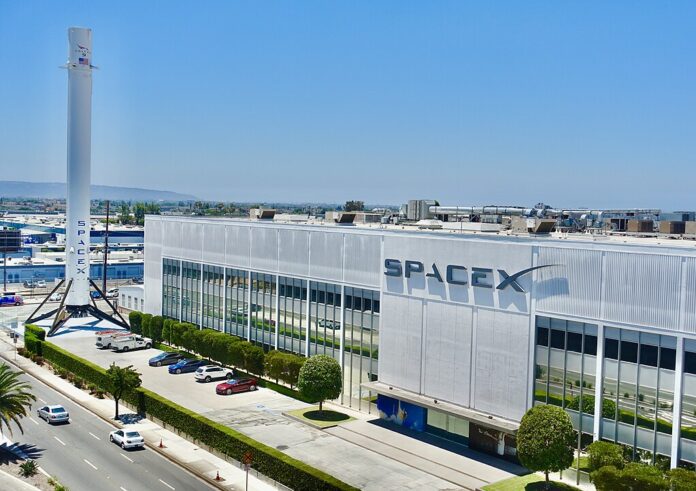NASA announces the diverse international team set to launch on SpaceX’s crew-10 mission, marking the 10th crew rotation as part of its commercial crew program
NASA has unveiled the crew for its SpaceX Crew-10 mission, scheduled for launch no earlier than February 2025. This mission will see four astronauts embarking on a long-duration stay aboard the International Space Station (ISS), continuing NASA’s collaboration with SpaceX under its Commercial Crew Program.
The Crew-10 team includes NASA astronauts Commander Anne McClain and Pilot Nichole Ayers, JAXA (Japan Aerospace Exploration Agency) astronaut Mission Specialist Takuya Onishi, and Roscosmos cosmonaut Mission Specialist Kirill Peskov. The mission will be the 10th crew rotation with SpaceX, emphasizing the ongoing international cooperation in space exploration.
Embed from Getty ImagesAnne McClain, selected as an astronaut in 2013, will be making her second spaceflight. A distinguished U.S. Army colonel, McClain holds a bachelor’s degree in Mechanical Engineering from the U.S. Military Academy at West Point, and master’s degrees in Aerospace Engineering, International Security, and Strategic Studies. McClain’s experience includes over 2,300 flight hours in various aircraft and service as a flight engineer during Expeditions 58 and 59, where she completed two spacewalks totalling over 13 hours. Her extensive background includes roles as branch chief and assistant to the chief of NASA’s Astronaut Office.
Nichole Ayers, a major in the U.S. Air Force and a member of NASA’s 2021 astronaut class, is set to make her debut on this mission. Ayers graduated from the Air Force Academy with a degree in Mathematics and a minor in Russian. She later earned a master’s in Computational and Applied Mathematics from Rice University. With over 1,400 flight hours, including more than 200 in combat, Ayers has extensive experience as an instructor pilot and mission commander in various aircraft, including the T-38 ADAIR and F-22 Raptor.
Takuya Onishi, representing JAXA, will also be on his second spaceflight. Onishi was selected by JAXA in 2009 and previously served as a flight engineer for Expeditions 48 and 49. He was the first Japanese astronaut to capture the Cygnus spacecraft and contributed to the development of new experimental environments aboard the Kibo module. Post-flight, Onishi became a certified JAXA flight director, leading operations of the Kibo module from Japan. He holds a degree in Aeronautics and Astronautics from the University of Tokyo and has over 3,700 flight hours from his career as a pilot for All Nippon Airways.
Kirill Peskov, making his first spaceflight, is the newest addition to the crew. Selected as a cosmonaut in 2018, Peskov has a degree in Engineering from the Ulyanovsk Civil Aviation School and previously worked as a co-pilot on Boeing 757 and 767 aircraft. His training includes skydiving, zero-gravity simulations, scuba diving, and wilderness survival.
The International Space Station has been continuously occupied for over 20 years, serving as a pivotal platform for scientific research and technological advancement. The ISS continues to provide critical insights into long-duration spaceflight and supports commercial ventures in low Earth orbit. NASA’s Artemis program, aimed at returning humans to the Moon and preparing for Mars exploration, complements these efforts as part of the broader vision for space exploration.
Analysis:
Political:
NASA’s SpaceX Crew-10 mission reflects ongoing international cooperation and competition in space exploration. By involving astronauts from NASA, JAXA, and Roscosmos, the mission underscores the strategic importance of maintaining strong international partnerships in space. This collaboration is crucial as nations and private companies vie for leadership in space technology and exploration. Such missions also align with broader political objectives, such as fostering global alliances and maintaining geopolitical influence through technological and scientific achievements.
Social:
The diverse makeup of the Crew-10 mission team highlights the increasing inclusivity in space exploration. By featuring astronauts from different countries and backgrounds, NASA and its partners promote a vision of global collaboration and mutual respect. This representation is important as space agencies aim to inspire the next generation of scientists and engineers worldwide, demonstrating that space exploration is a field open to all.
Racial:
The participation of astronauts from different nationalities on the Crew-10 mission illustrates progress in international representation in space. While the mission showcases diversity, there remains a broader conversation about racial and ethnic diversity within the astronaut corps. Ensuring that space exploration reflects a variety of backgrounds is essential for promoting equity and opportunity in this high-profile field.
Gender:
The Crew-10 mission continues the trend of increasing female representation in space. Commander Anne McClain’s second spaceflight and Nichole Ayers’ debut are significant milestones, reflecting ongoing efforts to achieve gender parity in space missions. Despite these advances, there is still work to be done to achieve full gender equality in space exploration roles, with efforts needed to ensure that women have equal opportunities to participate and lead in this arena.
Economic:
The Crew-10 mission underscores the economic implications of space exploration. NASA’s partnership with SpaceX and other international space agencies highlights the investment in human spaceflight as a driver of technological innovation and commercial opportunities. The continuous operation and expansion of the ISS provide a testing ground for technologies that have applications both in space and on Earth, driving economic benefits and supporting the growth of the space economy.
